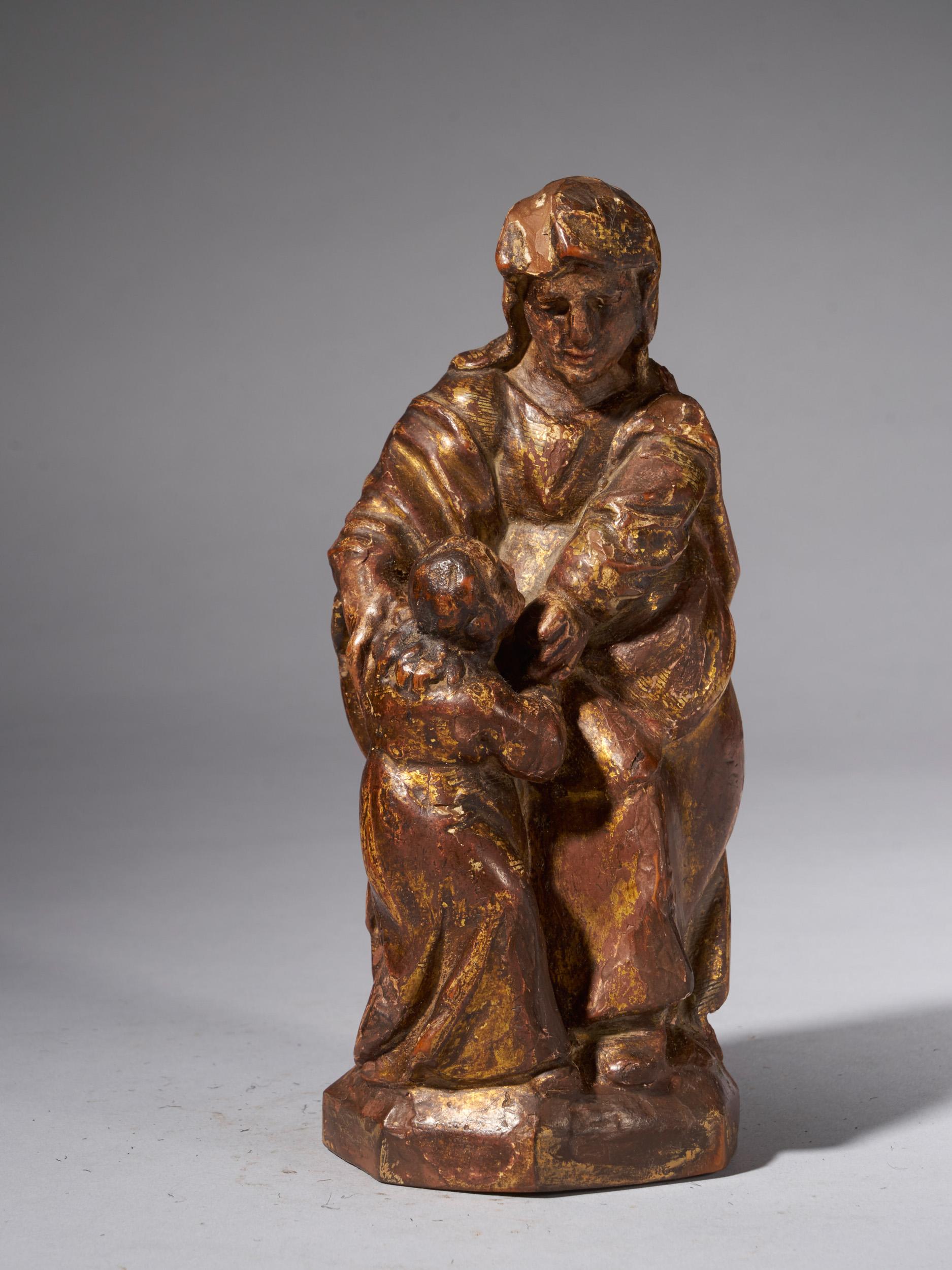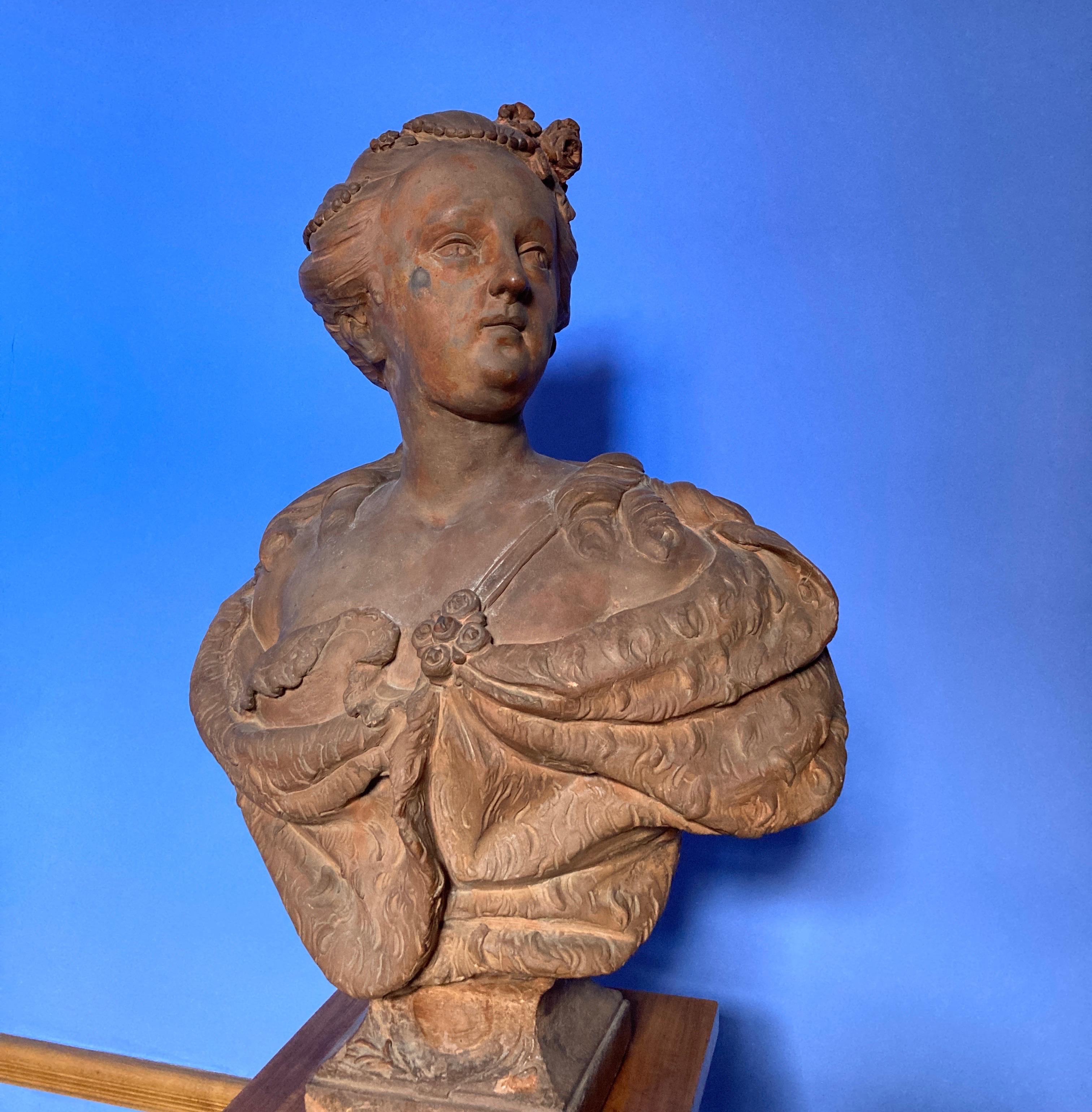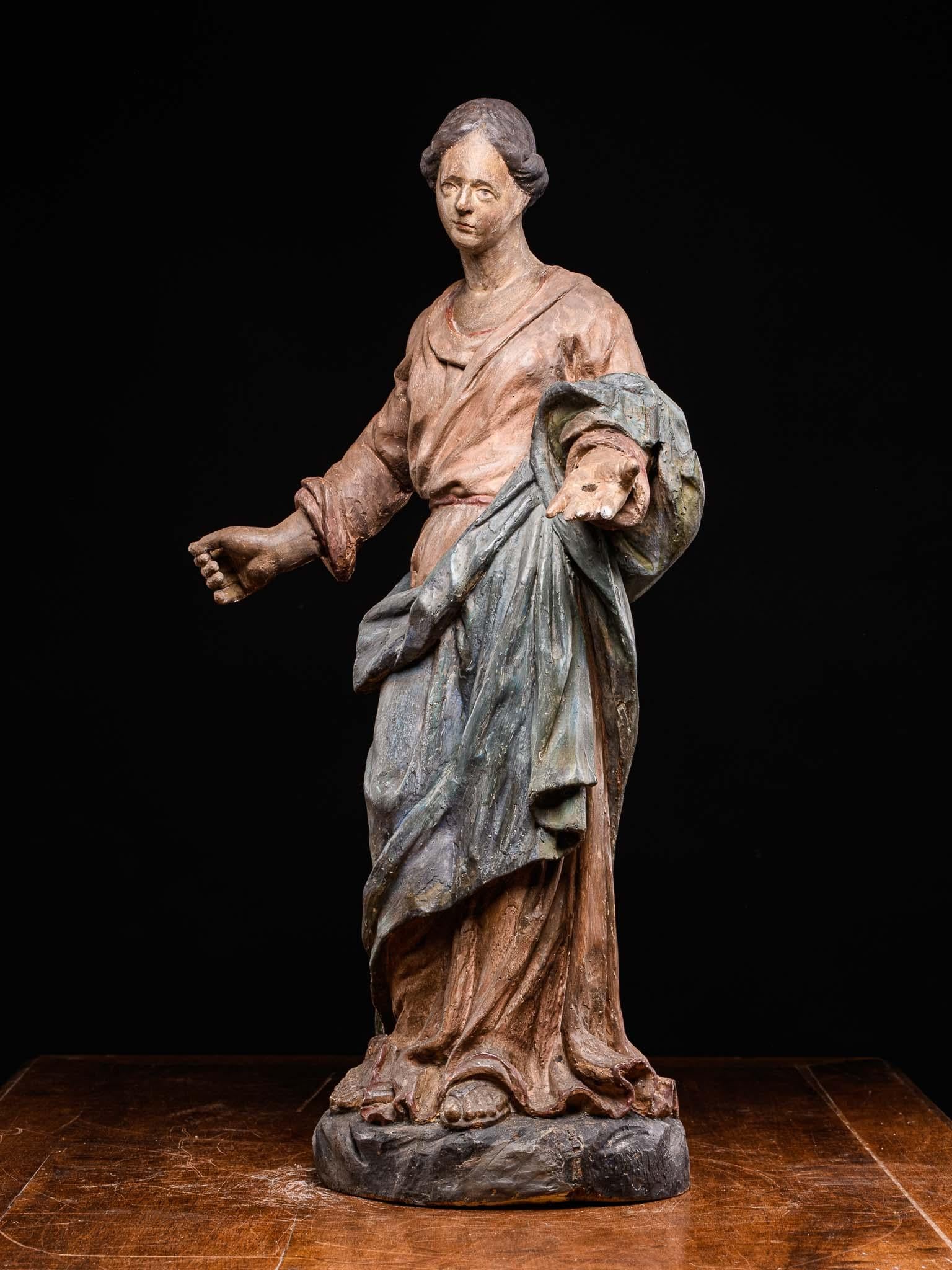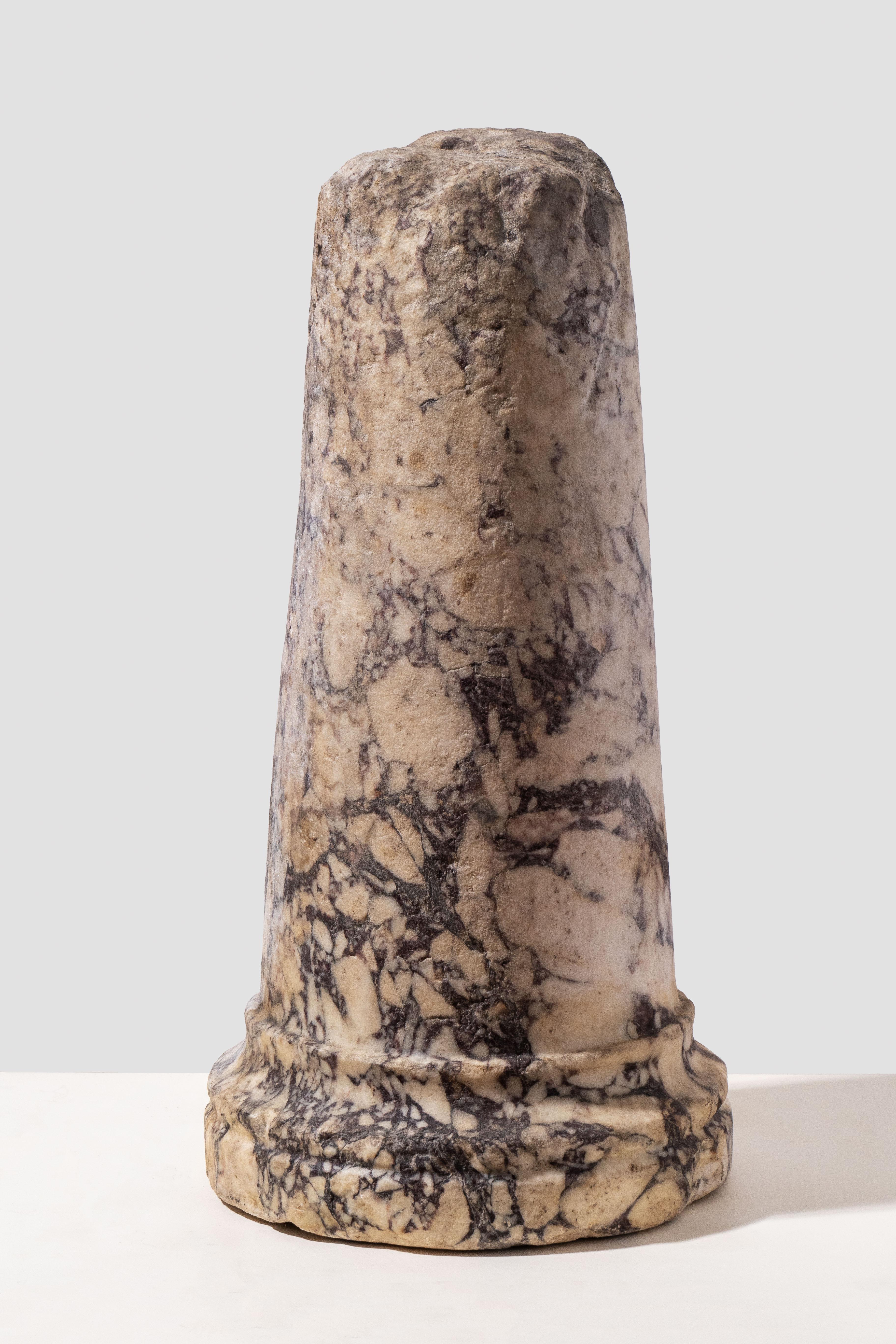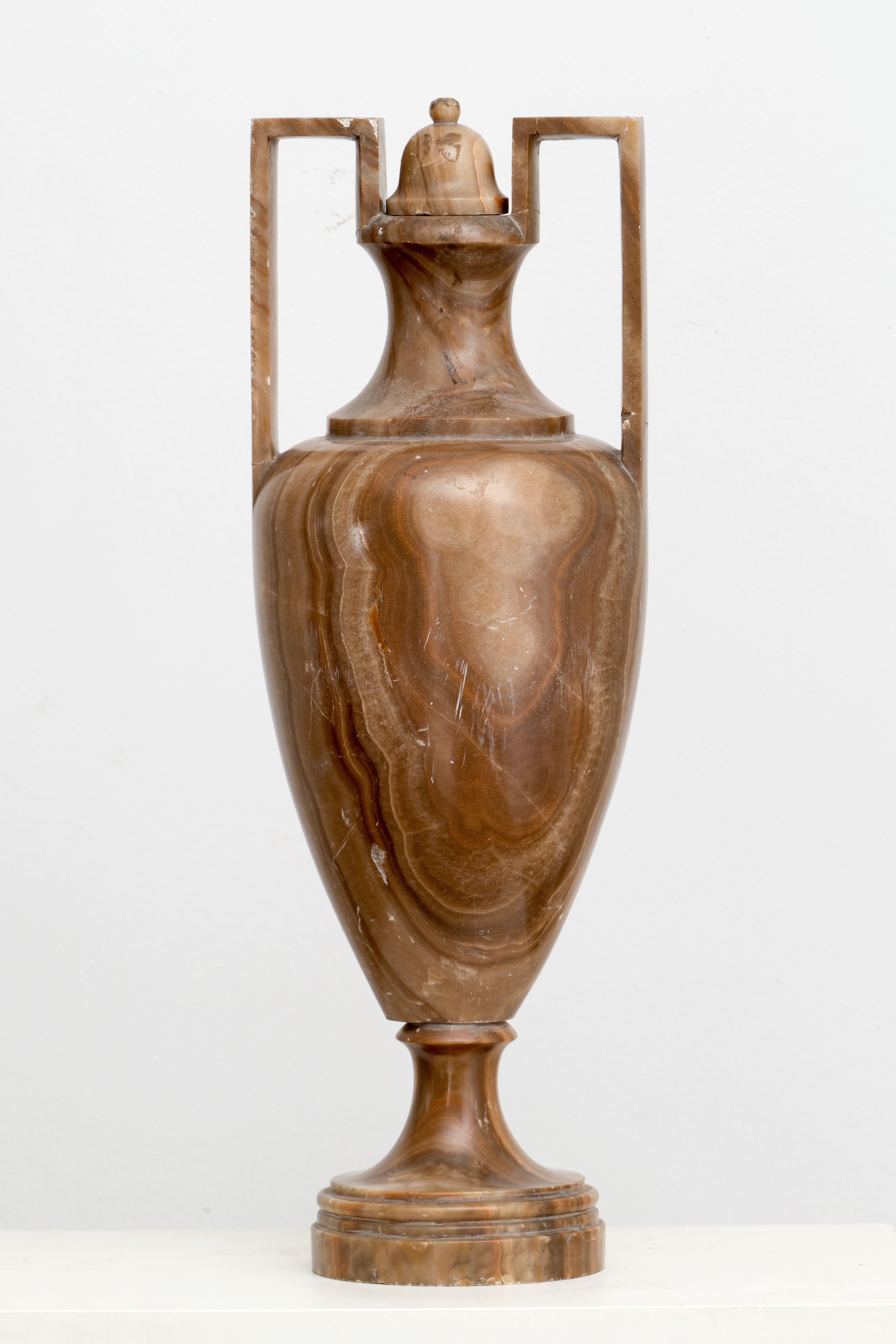Items Similar to 17th C Stone statue of Saint Erasmus or Saint Elmo
Want more images or videos?
Request additional images or videos from the seller
1 of 9
Unknown17th C Stone statue of Saint Erasmus or Saint ElmoUnknown
Unknown
About the Item
Saint Erasmus or Saint Elmo (Antioch, ca. 240 – Formia, 303) was an Italian bishop and patron saint of the sailors. His attribute was the capstan, a winch on which the anchor chains were rolled up. He died as a martyr for his faith, and his bones were transferred to Gaeta in the 9th century, where they are kept in the cathedral to this day. The electric phenomenon of Saint Elmus fire is named after Saint Erasmus and the 16th C humanist Desiderius Erasmus. Little is known with certainty about Saint Erasmus' life. However, many legends may have been passed on orally until - no older writings are known with certainty. His birthplace was in present-day Syria. However, the persecution of Christians under Emperor Diocletian forced him to flee to Mount Lebanon. Legend has it that an angel visited him with the message to return home, which he did. In Antioch, he was immediately captured and tortured.
Again he managed to escape, this time to Italy. He is said to have continued his preaching in Campania and the last seven years of his long life in Formia, where his executioners finally caught up with him. Saint Erasmus was tried and tortured to death. The nature of torture has not been described in the literature. In the art, on the other hand, it is presented as if his executioners tied him on the pain bench and cut open his belly. With a winch, his small and large intestines were slowly turned out of his stomach. His life and eventual fate have been depicted countless times over the centuries. He is traditionally shown with a bishop's staff and mitre in the visual arts. Only a few works refer to his martyrdom.
- Creation Year:Unknown
- Dimensions:Height: 31.5 in (80 cm)Width: 11.82 in (30 cm)Depth: 6.3 in (16 cm)
- Medium:
- Movement & Style:
- Period:
- Condition:paintloss and small cracks consistent with the statues age.
- Gallery Location:brussel, BE
- Reference Number:
About the Seller
5.0
Vetted Seller
These experienced sellers undergo a comprehensive evaluation by our team of in-house experts.
1stDibs seller since 2021
13 sales on 1stDibs
- ShippingRetrieving quote...Ships From: leuven, Belgium
- Return PolicyA return for this item may be initiated within 3 days of delivery.
More From This SellerView All
- Late 17th C, Baroque, Saint, Italian School, Wooden Sculpture of Saint AnthonyLocated in brussel, BEThe impressive life-size statue of St. Anthony (Lisbon, 1195 – Padua, 1231) used to be probably in a church or monastery of the mendicant order of the Franciscans. You can immediately recognize a Franciscan monk by his brown habit, brown hooded cloak...Category
17th Century Baroque Figurative Sculptures
MaterialsWood
- 18th C, Religious, Spanish School, Partly Gilded Wooden Sculpture of MariaLocated in brussel, BEThe gospel of St. Luke tells how Mary and Joseph took Jesus with them on their annual pilgrimage to Jerusalem. After seven days of celebration, Jesus’ parents returned home, but were...Category
18th Century Baroque Figurative Sculptures
MaterialsCanvas, Oil
- 17th C Polychromed fruitwood carved statue depicting Madonna, France.Located in brussel, BEAn exceptionally beautiful antique French wood carving, made in the 17th century. It depicts Madonna standing with open offering arms .The...Category
17th Century Baroque Figurative Sculptures
MaterialsWood
- Bariba People, Benin, Rare Terracotta Ceremonial Altar Vessel.Located in brussel, BEThis pottery vessel, embellished with high relief figures, was made by women of the ethnic group of the Bariba (or Baatonu) in the northern provinces of Benin. The Bariba potters pas...Category
20th Century Figurative Sculptures
MaterialsStone
- Pair of 19th C Carousel Decorative Female Torsos attributed to Charles I.D. LuffLocated in brussel, BEThis pair of female torsos presumably decorated a fair stand or an organ in a theme park. They were most likely part of a significant organ intended to ente...Category
19th Century Figurative Sculptures
MaterialsWood
- 16th C Mechelen Doll with letter M carved in the back.Some leftovers of polychroLocated in brussel, BEMechelen dolls are rare wooden devotional figurines (mainly walnut was used), which were made by some members of the Guild of Saint Luke. The figures, all individual saints, were made from reference models using highly regulated carving and polychrome techniques. They had to meet several requirements. The shape of the rug had to meet certain criteria and the letter M (from Mechelen) had to be visible in the shape. These devotional or saint figurines...Category
16th Century Figurative Sculptures
MaterialsWood, Driftwood
You May Also Like
- Bust of a Lady, prob Queen Elisabeth Petrowna, Terracotta Sculpture, Baroque ArtLocated in Greven, DEBust of a Lady, thought to be Elisabeth Petrowna, also known as Elisabeth of Russia Depicted before she was crowned Terracotta Bust Elizabeth Petrovna (Russian: Елизаве́та (29 Decem...Category
18th Century Baroque Figurative Sculptures
MaterialsTerracotta
- ANTIQUE ITALIAN ARCHITECTURAL FRAGMENT OF PLINTH IN 'BRECCIA MEDICEA' MARBLELocated in Milan, ITBRECCIA FRAGMENT PLINTH Italy, 18th Century Breccia medicea 55 x d 25 cm 21 3/4 x d 9 3/4 inCategory
18th Century More Art
MaterialsMarble
- MONUMENTAL NEOCLASSICAL URN IN ALABASTER -Italy, 19th Century Alabastro fioritoLocated in Milan, ITMONUMENTAL NEOCLASSICAL URN IN ALABASTER Italy, 19th Century Alabastro fiorito 54 x 18 cm 21 1/4 x 7 in minor chips and damagesCategory
19th Century Figurative Sculptures
MaterialsAlabaster
- ANCIENT ROMAN MARBLE SCULPTURE PORTRAIT HEAD OF A GIRLLocated in Milan, ITPORTRAIT HEAD OF A GIRL Rome, circa 2nd/3rd century A.D. Marble height 18.4 cm height 7 1/4 in Provenance: Sotheby's, London, May 23rd, 1988, no. 240,...Category
15th Century and Earlier Figurative Sculptures
MaterialsMarble
- RARE PAIR OF ITALIAN PIETRA PAESINA COLUMNS, Italy, 19th CenturyLocated in Milan, ITRARE PAIR OF ITALIAN PIETRA PAESINA COLUMNS, Italy, 19th Century Pietra Paesina H 70 x Diam 9.5 cm H 27 1/2 x Diam 3 3/4 inCategory
19th Century Figurative Sculptures
MaterialsMarble
- LARGE ITALIAN RENAISSANCE MARBLE CAPITAL, 15th/16th CenturyLocated in Milan, ITLARGE ITALIAN RENAISSANCE MARBLE CAPITAL Florence, 15th/16th Century marble 38 x 47 x 47 cm 15 x 18 1/2 x 18 1/2 inCategory
16th Century Figurative Sculptures
MaterialsMarble
Recently Viewed
View AllMore Ways To Browse
Baroque Stone
Antique Stone Sculpture
Antique Black Stone
Italian Sculpture Stone
Antique Statue Art Sculptures
Small Stone Sculpture
Seven Stone
16th C
9th Century
Emperor Sculpture
Stone Used For Statues
16th Century Stone
Large Figurative Statues
Antique Black Statues
Antique Stone Statues
Antique Stone Statue
Baroque Saints
Cathedral Stone
